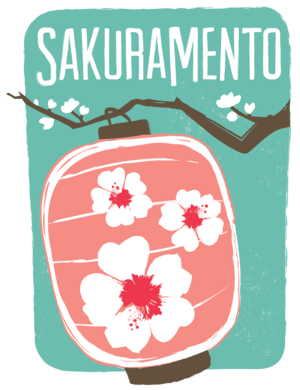The Hanami Line will be a new park along the Sacramento River, featuring a massive planting of flowering Cherry Trees and a year-round public space at a central and important location.
The Hanami Line will celebrate the rich cultural contributions of Japanese-Americans in the Sacramento region.
The Japanese word “Hanami” describes the experience of enjoying cherry trees in bloom with your friends and loved ones. When the trees bloom along the Hanami Line in early Spring, they will become a magnet for local residents and visitors—viewed from the park itself as well as from the Sacramento River.
Working with the City of Sacramento, the planned Science Center and other regional governments, the Sacramento Tree Foundation will develop a master plan which provides the framework for the Hanami Line.
The primary Cherry Tree species proposed for Hanami Line will be Prunus sargentii ‘Pink Flair’ which is a variety highly suited to urban conditions and tolerant of heat and drought. The Pink Flair Cherry Tree has a smaller mature height and spread that the larger species found in traditional Japanese Hanami Line landscapes. With a mature height of 25’ feet and spread of 15’ this compact variety is suitable for trail and roadway conditions where space restrictions may occur, such as a narrow planting strip between roadway and pedestrian path and beneath utility line. In addition to the Pink Flair Cherry, we will propose planting a flowering cherry variety that is of a similar mature height but wider in spread than the upright and vase-shaped Pink Flair, such as Prunus x yedoensis cv. Amerika Yoshino Cherry which spreads to approximately 25 ft. The wider spreading variety would be planted in key gathering and grove areas where there is more space for a wider spreading tree
The alignment of the Hanami Line will generally follow the existing pedestrian/bicycle pathway located along the east bank of the Sacramento River that connects Old Town Sacramento with Discovery Park.
Interpretive elements will be located in each public gathering space and will be connected with the “Walk of Fame” that will highlight the contributions made by Japanese citizens throughout the history of California.
The tree-lined promenade will incorporate traditional Japanese lanterns that illuminate the pathway at night and provide a colorful, artistic expression of culture by day. In some locations the Hanami Line will use the existing pedestrian/bike trail (Two Rivers Trail) and in locations where space allows, it will be a new, separated decomposed granite pathway. The site plan will reflect this approach with final alignments to be confirmed during the agency coordination phase of the project planning.
The master plan will feature many unique design elements along the 0.8 mile long riverfront corridor:
Sister City (Matsuyama) Parasols: an art installation using colorful shade umbrellas with identical designs, installed in both cities within a similar context. These will be mixed into the tree plantings and used in locations where the soil or physical constraints do not support tree plantings.
Matsui Park; a formal Alle’eplanting of Cherry Trees along the existing curved walkway with numerous benches for picnicking.
Powerhouse Grove; a dense orchard style planting of Cherry Trees with lawn picnicking.
River Confluence Overlook (to be named by sponsor); a public gathering space with both formal and informal seating and panoramic views of the two rivers confluence.



